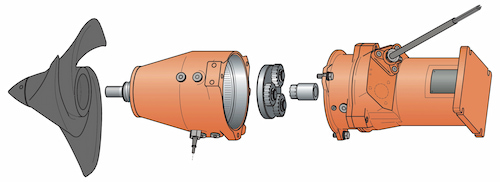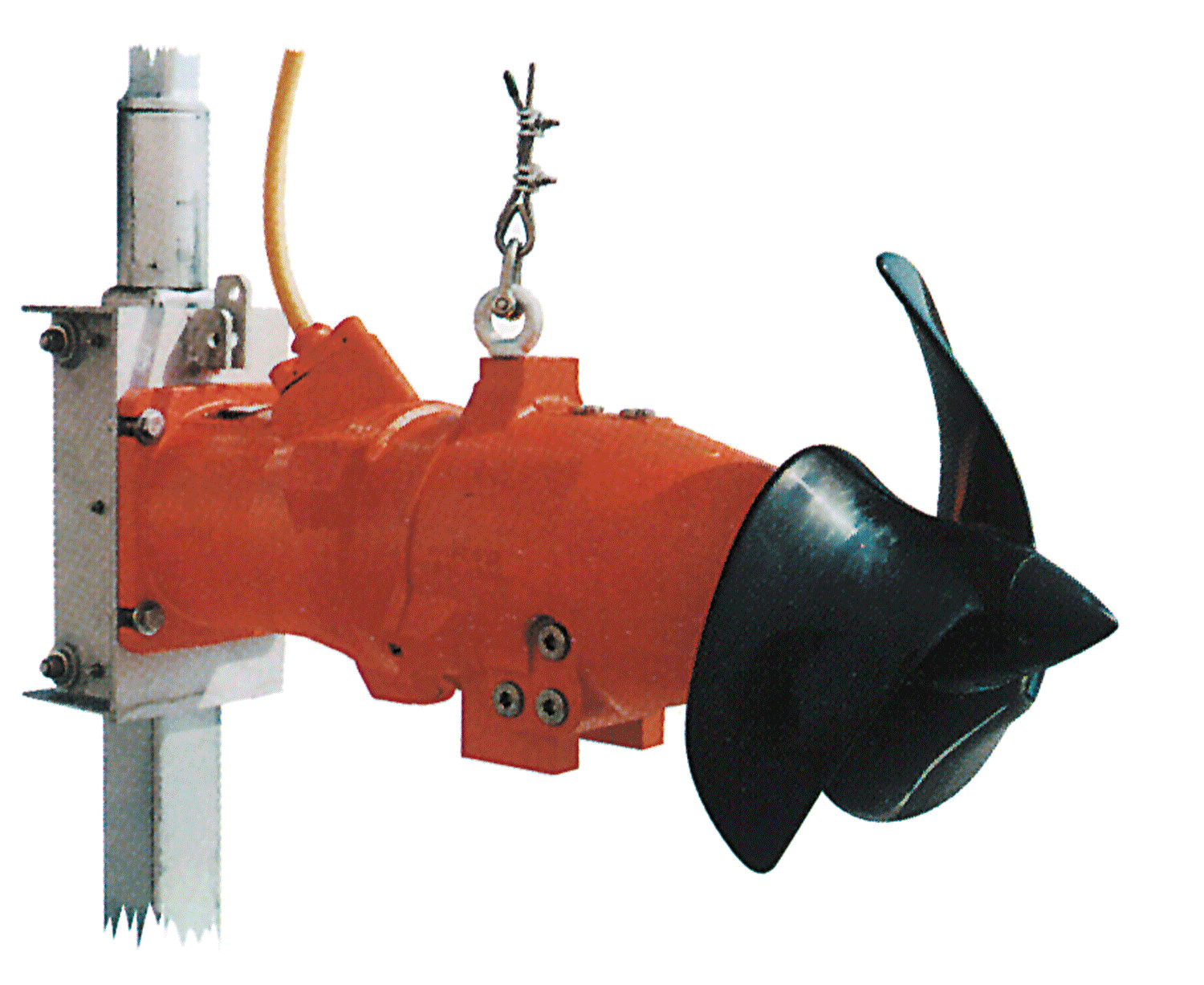Energy is the largest ongoing cost of mixer operation, so it is vital to carefully consider the energy-to-thrust ratio (sometimes called the “water-to-wire” ratio) for each and every mixer application.
However, it is just as critical to specify mixing technologies that provide reliability and long life.
Excessive downtime, repair and maintenance – caused by poorly engineered components, the use of inferior quality materials or imprecise manufacturing – can quickly rob the substantial gains that result from the achievement of reduced electrical costs.
Finding the Right Match is Easier When Components are Modular
Every application has unique requirements, so mixer efficiency for a particular application can be maximized only when the overall synchronization of mixer components is customized for and appropriate to an application’s specific requirements. (The greater the overall mixer efficiency, the higher the percentage of energy that ultimately translates into thrust to drive the propeller.)
Coordination of motor, gearing configuration, and propeller design can best be achieved in mixer lines that are modular in design. These are mixer lines in which motors of different horsepower can be combined with various gear ratios and precise propeller sizes, types and styles to achieve optimum energy-to-thrust ratios.
A high horsepower-to-amp draw ratio for mixer motors results in greater torque, less heat build-up, and greater reserve. This can be achieved most simply through the use of planetary gearing in the basic mixer design.

Coordination of motor, gearing configuration, and propeller design can best be achieved in mixer lines that are modular in design.
An Efficient Propeller Blade Design is an Essential
Propeller blades that are engineered to perform aerodynamically, much like the wing of an airplane, are essential to the achievement of maximum efficiencies.
As this type of blade moves, it creates lift and thereby draws liquid through the “created” low-pressure zone, which is generated by the passage of the blade. (This is more hydraulically effective than the effects achievable with flat blades, which basically push the liquid in front of the blade to generate flow.)
Studies have shown that the aerodynamic blade designs result in 2X to 3X greater thrust efficiency than the thrust efficiency of comparably sized flat blades.

Aerodynamic blade designs result in 2X to 3X greater thrust efficiency.
Tests Have Demonstrated the Value of Energy-to-Thrust Optimization
Numerous side-by-side tests have proven the value of optimizing the energy-to-thrust ratio of mixers.
For example, one notable test involved a head-to-head comparison between an optimized submersible mixer employing planetary gearing and typical direct drive mixers. The test was conducted at the Michelson Water Reclamation Plant, of the Irvine Ranch Water District located near Los Angeles, CA.
Over a three-month period, it was found that suspended solids levels maintained by the optimized mixer and the typical mixers were statistically comparable in every location and at every depth. However, throughout the three-month duration of the test, the optimized mixer consumed 56.02 percent less power than the ordinary mixers.
At current kilowatt prices, a 50 percent plus savings in energy can, of course, dramatically affect the budget of any sized operation.
However, Reliability is as Important as Efficiency
In addition to achieving a high energy-to-thrust ratio, boosting cost efficiency depends on increasing the overall reliability and life span of a mixer.
There are many contributors to reliability, but among the most important are the gearing components and shafting dynamics.
Planetary gearing – in which three planet gears each take 1/3 of the load of the motor – achieves a significant reduction of motor gear loading. This effectively increases motor gear-life more than 5X, in comparison to direct-drive arrangements.
Another critical factor impacting mixer reliability and longevity is the thickness of the shaft and its “overhang ratio.” Overhang ratio is defined as the shaft length between the bearing and the hub of the propeller, divided by the diameter of the shaft (shaft length/shaft diameter).
An ideal overhang ratio in the range of 2.5 greatly increases the life expectancy of a mixer and minimizes ongoing costs by reducing downtime throughout the life of the mixer. Care should be taken in this matter, as some mixers employ an overhang ratio as high as 7 – or even 10.
Experience has shown that a shaft with a length 7 or more times its diameter may deflect dramatically when subjected to a load, causing seal faces to open and allowing grit and other contaminates between the faces, thereby reducing the overall life of the equipment.
Mixers Deserve Careful Consideration and Proper Specification
Mixers are essential to a variety of processes and are often subjected to relentless 24/7 operation. For this reason, any savings in maintenance, repair and downtime is notable. Also, any savings in energy that can be achieved while accomplishing needed tasks has to be a welcome bonus to any budget.
For these reasons alone – if no others – the specification and purchase of mixers has to be considered with a view to total life cycle costs, as well as simply viewing initial purchase price.
Pumps & Systems, October 2006

